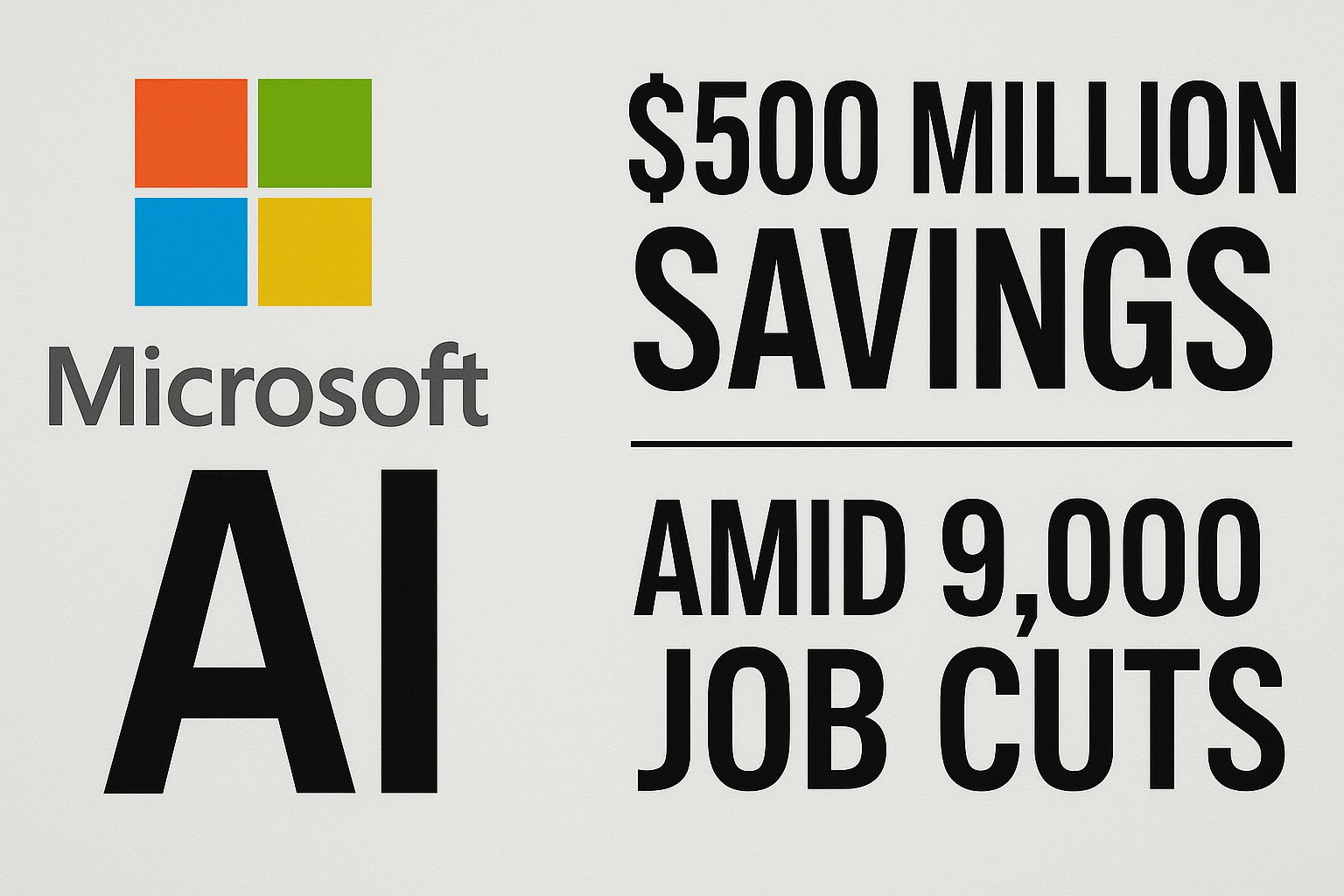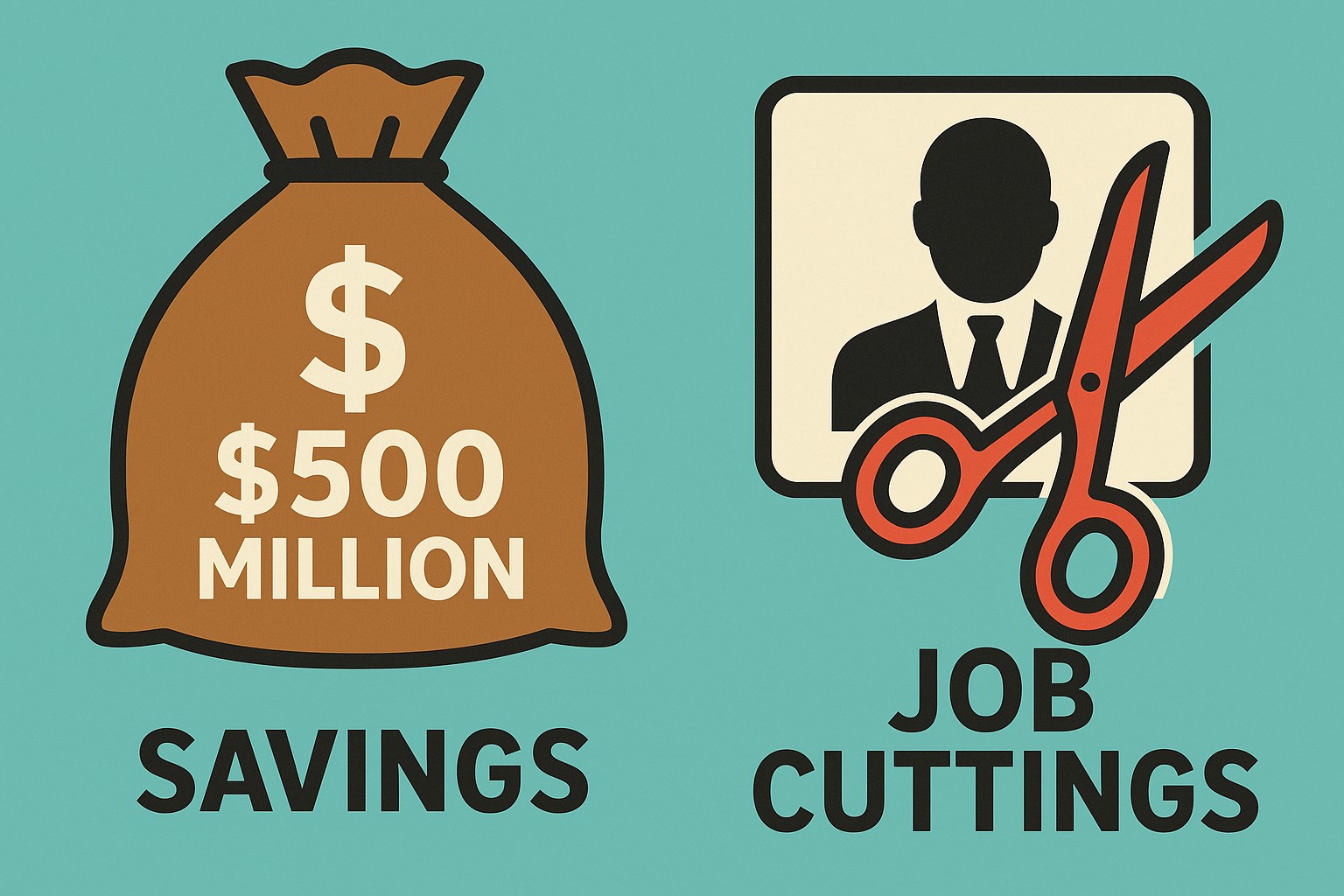Microsoft AI savings are rapidly reshaping the tech giant’s business model. In a move that blends technological innovation and cost-cutting measures, Microsoft has achieved over $500 million in savings through AI-powered automation and other efficiency improvements. This announcement comes alongside the company’s decision to reduce its workforce by 9,000 employees, highlighting a broader trend in the tech industry: the growing role of AI in streamlining operations and cutting costs.
Microsoft AI Savings Through Automation and Internal Restructuring
Microsoft’s AI adoption has proven to be a game changer, allowing the company to enhance productivity and reduce operational expenses. As part of its internal restructuring, Microsoft is using advanced AI tools across departments, from customer support to software development, resulting in significant cost savings. The company’s AI-driven initiatives have made operations faster and more accurate, replacing manual, time-consuming tasks with automated solutions. These efficiencies are directly contributing to the reported $500 million in savings. However, this shift has also led to substantial workforce reductions, as roles once performed by employees are increasingly being handled by AI systems.
This development is part of Microsoft’s long-term strategy to leverage AI technology for greater profitability and innovation. By automating internal processes, Microsoft not only boosts its bottom line but also positions itself to stay competitive in an increasingly AI-driven market. The company’s efforts were highlighted in reports from Reuters and TechCrunch, which emphasize how AI savings are transforming Microsoft’s approach to operations. AI-driven platforms, like GitHub Copilot and Azure AI, are playing pivotal roles in this transformation, streamlining everything from software development to cloud computing.
Microsoft AI Savings and Its Impact on Job Cuts
Despite the positive financial outcomes associated with Microsoft’s AI savings, the layoffs have sparked controversy. The company is cutting approximately 9,000 jobs, particularly in sales and marketing, in a move that mirrors similar decisions by other tech companies aiming to optimize their operations. This decision has raised concerns about the future of jobs in the tech industry, with many questioning whether AI will lead to more widespread job displacement.
The implications of Microsoft’s restructuring efforts are far-reaching. On one hand, the company is strengthening its position in cloud computing and AI-driven services, sectors that are expected to see explosive growth in the coming years. On the other hand, the layoffs highlight the challenges of adapting to automation, which increasingly displaces human workers in favor of AI tools. For Microsoft, the path forward is clear: continue to innovate and expand its presence in AI and cloud computing, but with a workforce that is leaner and more focused on high-value tasks.
Future of Microsoft AI Savings: Strategic Focus on Innovation and Growth
Microsoft’s approach is part of a broader trend in the tech industry where companies are increasingly relying on AI technologies to replace routine, repetitive tasks traditionally handled by humans. Automation is seen as a key enabler of productivity, but it also raises concerns about the potential for job loss and the need for retraining and reskilling. As the company invests heavily in AI innovation, it is simultaneously grappling with the human cost of its transformation.
For employees who remain, Microsoft’s continued investment in AI may provide new opportunities for professional growth. The company is focusing on creating roles that require a higher level of skill, particularly in areas like data science, cloud computing, and AI engineering. As routine tasks are automated, Microsoft aims to shift its workforce towards more complex and creative roles that leverage its cutting-edge technologies.
Microsoft AI Savings: A Sign of the Changing Tech Landscape
Microsoft’s decision to cut jobs while reporting AI-driven savings is a clear signal of the direction the tech industry is heading. Companies that can harness the power of AI and automation will be able to reduce costs, improve efficiency, and stay competitive in a rapidly changing market. However, the process also underscores the need for businesses to balance technological advancements with the well-being of their employees.
In conclusion, Microsoft’s reported $500 million AI savings and the simultaneous 9,000 job cuts illustrate the profound impact of artificial intelligence on the workforce. While the company is benefiting financially from its AI-driven efficiency gains, it faces the challenge of addressing the social and economic consequences of large-scale automation. As the AI revolution continues to unfold, companies like Microsoft will need to navigate the complexities of embracing new technologies while managing the human costs associated with them.
For more details on how Microsoft is utilizing AI in its operations, check out Reuters’ report on Microsoft’s AI savings or TechCrunch’s coverage of the job cuts.


